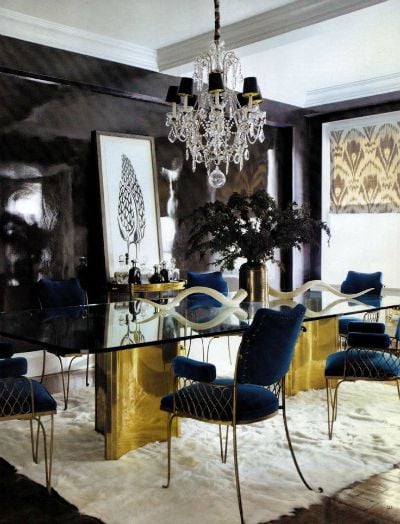Join us for a quick and easy crash course on ten of our favorite design styles, and you’ll be chatting up interiors with the best of them, not to mention curating your own.
Mid-Century Modern is so hot right now. This style defines furniture and design elements from the mid-20th century (think Mad Men) or newer products inspired by it. The style is simple, with an emphasis on natural elements, contemporary patterns and shapes, and an uncluttered approach to filling a space. If you prefer Don Draper to Walter White and crave clean lines, bold colors and retro influences, this is the look for you.
Shabby Chic incorporates real-life into your space. It takes the perfection out of an interior and makes it a little less buttoned-up. Elements include well-loved, mismatched furniture (often painted, whitewashed, or repurposed), white and pastel color palettes, and pops of feminine accents and prints (ruffles and flowers). Want to throw some vivid linens on your grandmother’s dark wood bed? Go for it! If you like pretty, unpretentious spaces that feel lived-in and cozy, embrace Shabby Chic.
Image via One Kin Design
Industrial style is not concerned with furniture or pieces that are fancy; rather, it’s utilitarian and functional. This style includes lots of salvaged elements including metal and worn wood (the types of wood don’t necessarily even have to match) and incorporate an unfinished look filled with pieces that could have been ripped out of an old warehouse or mill. If you prefer a scrappy, gritty sort of space that still has a modern look, this is all you.
Image Credit: Decoholic
Contemporary design says “stick it” to more traditional decor and lightens the load. Minimal, statement-making furniture, clean lines and surfaces, open air spaces and abstract art with very little accessories define this aesthetic. If you’d rather be doing something else with your time than decorating your home but still appreciate a great space, if you’re a little abstract but still want polish, you’re Contemporary.
The Bohemian design is for those who follow no design rules and think minimalism is boring. It’s a look that is influenced by global styles and incorporates rich textiles and colors. Combining vintage furniture with some modern accents is all fair game. If you love a room that’s very much “more is more,” if prefer to buy your pieces from flea markets, and if are planning a trip to Morocco anytime soon, you’re a bonafide bohemian.
Image via Home Stories A to Z
Traditional evokes that feeling you have when you walk into the home of a loved one. Comfortable. Safe. Familiar. It might sound passe, but there’s a lot to love about this style – it’s been working for decades. This unpretentious design incorporates rich woods, antiques, soft textures and edges, simple patterns and a lot of symmetry. In a lot of ways, this style can suit anyone, but it’s the one for you if you like spaces that feel homey, prefer not to push the envelope, and like a classic look that will stand the test of time.
Image via Tidbits and Twine
Coastal isn’t your aunt’s tacky beach house. It’s so much more subtle. It evokes the essence of the sea, including cool or neutral colors, natural textures (think light-colored wood, jute, linen), understand beauty accessories, and fresh, open spaces. If you feel the need to be at the coast – any coast – even if you’re nowhere near one, this design is ideal for bringing the serenity of the ocean inside the walls of your home.
Image via Quinn Cooper Style
Hollywood Regency is all glitz and glam. Born from the golden age of filmmaking, there’s nothing minimal about this look. It’s bold and confident but still sophisticated with an emphasis on statement-making items, jewel tones, global influences, opulent textures and luxurious details. If you like crystal chandeliers, lacquer, and well-stocked bar carts, this one’s for you.
Image via A&C Revival Interiors
Craftsman was derived at the turn of the 20th century as a movement away from the elaborate Victorian look of the time. It values simple but quality handiwork with a great emphasis on function over form. There’s no frill to this look, and it includes plenty of natural elements – especially wood – as it seeks to bring the outside in. If you’re a fan of camping, nature, and unadorned, quality pieces and architecture, this is the style for you.
















